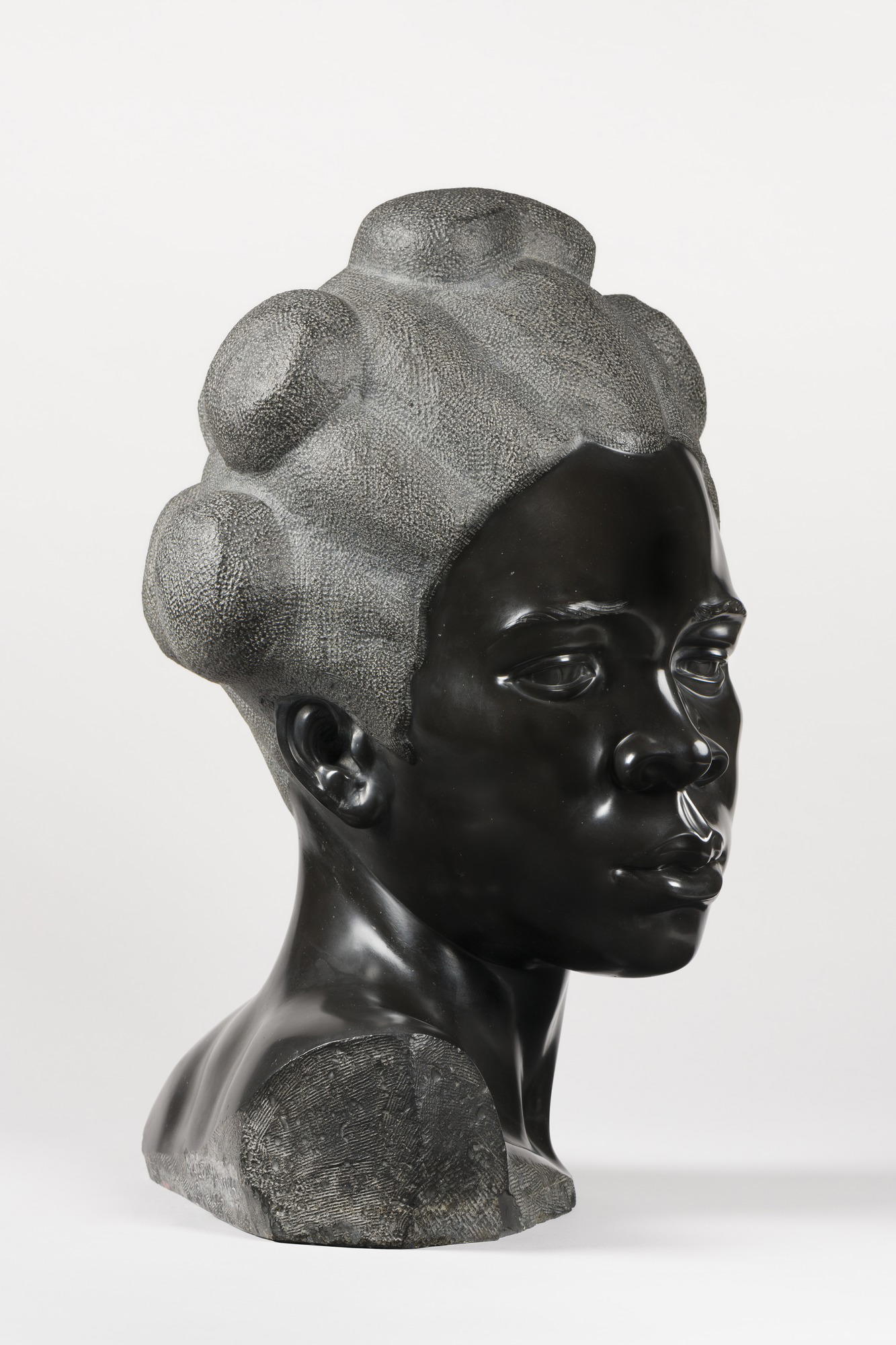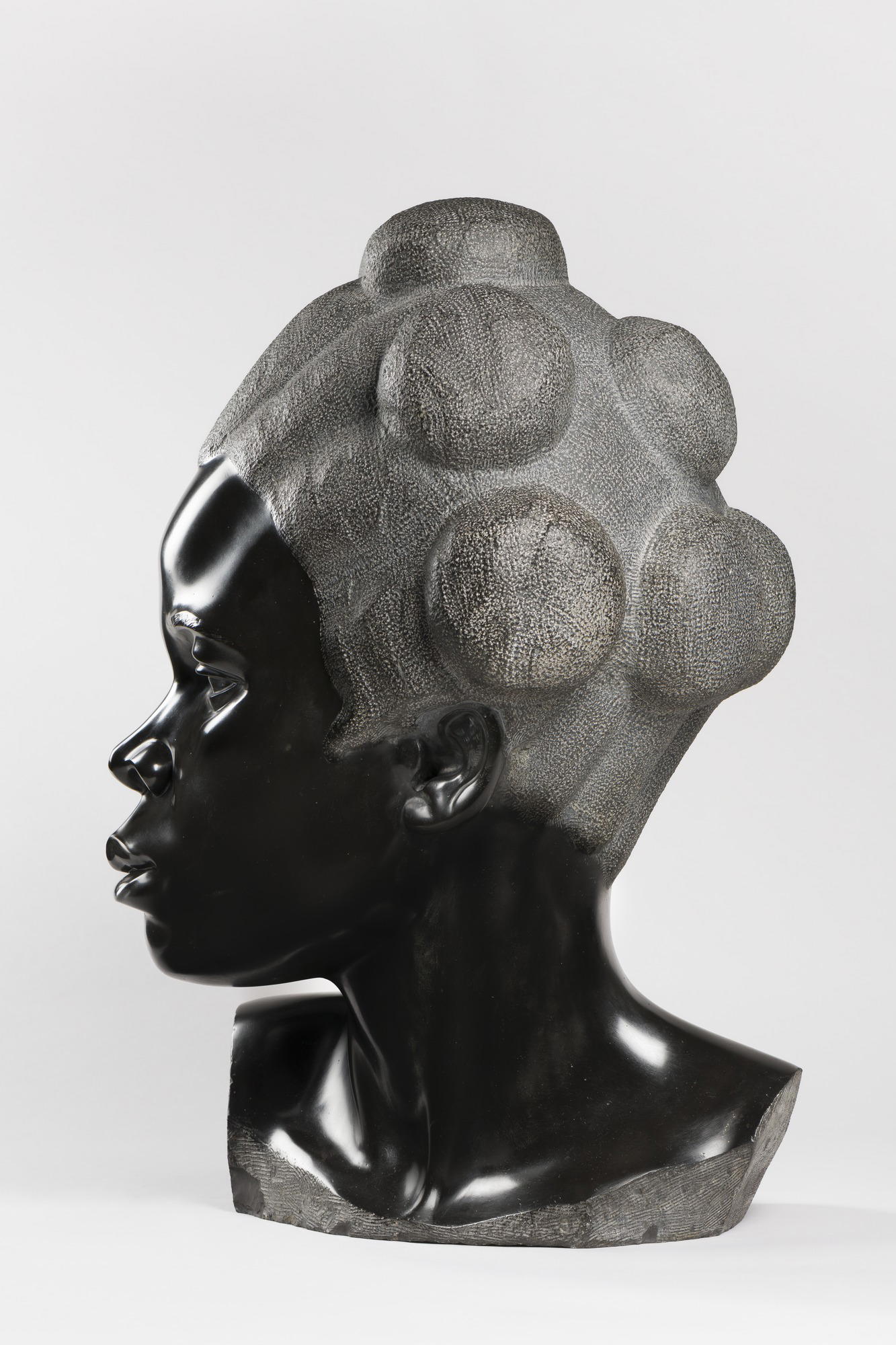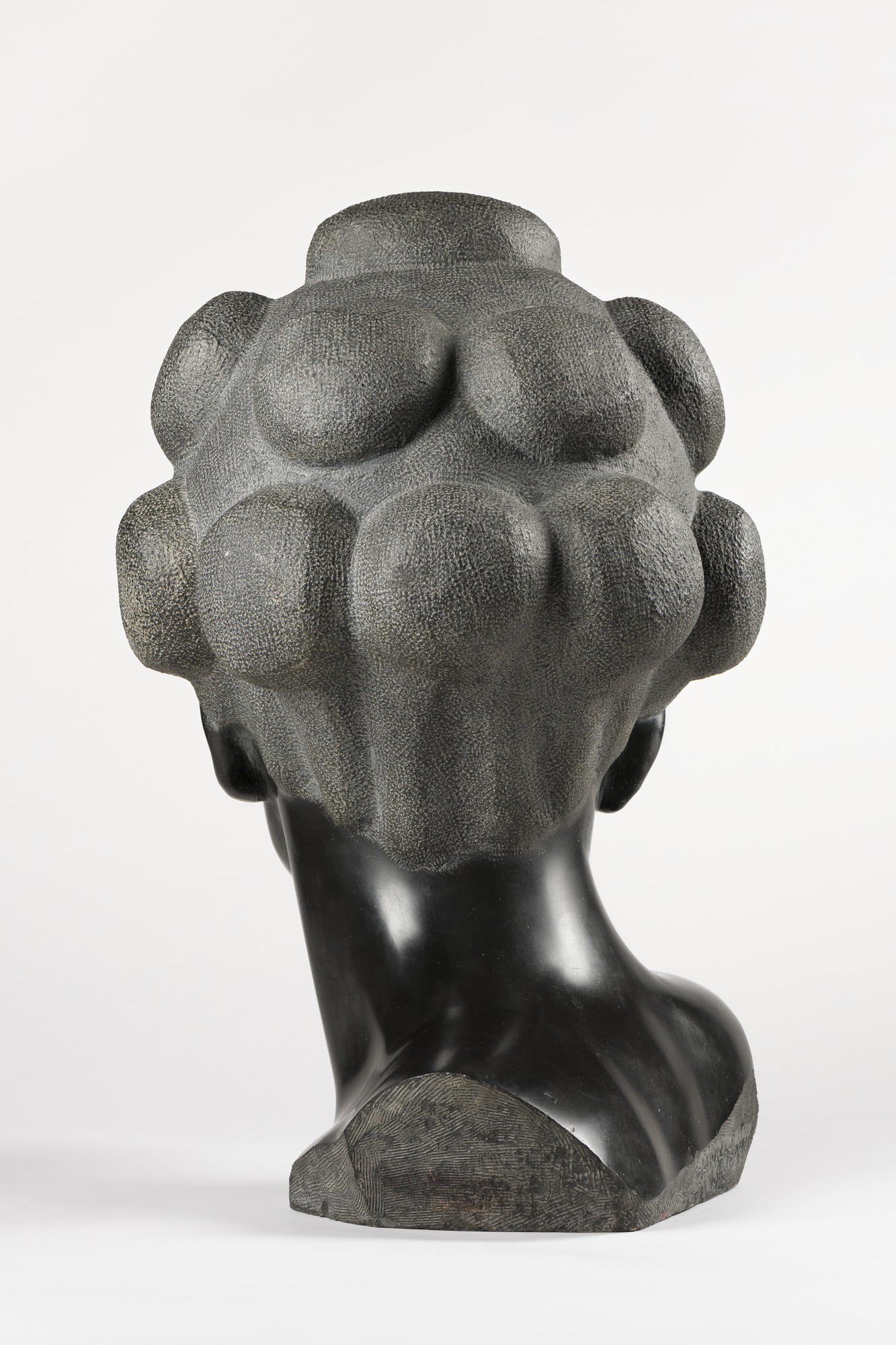Martinique Woman
1 of 4
Object Label
The modernized realism of this work signaled a deliberate break with earlier treatments of African subjects ranging from caricature to romanticism. For many years, however, the critical reception of Hoffman’s work remained firmly embedded in racist language and a Eurocentric point of view.
Caption
Malvina Hoffman (American, 1885–1966). Martinique Woman, 1928. Black Belgian marble, 22 × 14 1/4 × 15 1/4 in., 158 lb. (55.9 × 36.2 × 38.7 cm, 71.67kg) mount: 22 1/2 × 13 1/2 × 14 in. (57.2 × 34.3 × 35.6 cm). Brooklyn Museum, Dick S. Ramsay Fund, 28.384. © Estate of Malvina Hoffman. (Photo: Brooklyn Museum)
Gallery
Not on view
Collection
Gallery
Not on view
Collection
Artist
Title
Martinique Woman
Date
1928
Medium
Black Belgian marble
Classification
Dimensions
22 × 14 1/4 × 15 1/4 in., 158 lb. (55.9 × 36.2 × 38.7 cm, 71.67kg) mount: 22 1/2 × 13 1/2 × 14 in. (57.2 × 34.3 × 35.6 cm)
Signatures
Incised along bottom edge at back: "MALVINA HOFFMAN / © 1928"
Credit Line
Dick S. Ramsay Fund
Accession Number
28.384
Rights
© Estate of Malvina Hoffman
The Brooklyn Museum holds a non-exclusive license to reproduce images of this work of art from the rights holder named here. The Museum does not warrant that the use of this work will not infringe on the rights of third parties. It is your responsibility to determine and satisfy copyright or other use restrictions before copying, transmitting, or making other use of protected items beyond that allowed by "fair use," as such term is understood under the United States Copyright Act. For further information about copyright, we recommend resources at the United States Library of Congress, Cornell University, Copyright and Cultural Institutions: Guidelines for U.S. Libraries, Archives, and Museums, and Copyright Watch. If you have any information regarding this work and rights to it, please contact copyright@brooklynmuseum.org. If you wish to contact the rights holder for this work, please email copyright@brooklynmuseum.org and we will assist if we can.
Frequent Art Questions
What is this?
 That sculpture was created by a female sculptor named Malvina Hoffman. She made a series of portrait heads of African women during her travels there in 1928. It is titled "Martinique Woman" and it's a heroic-scale portrayal distinguished by the precise refinement of its volumes and the play of its polished and textured surfaces. Hoffman’s choice of subject participated in a broader phenomenon of cross-cultural documentation through which Western “authorities” sought to reshape and control the identities of vastly different cultures.
That sculpture was created by a female sculptor named Malvina Hoffman. She made a series of portrait heads of African women during her travels there in 1928. It is titled "Martinique Woman" and it's a heroic-scale portrayal distinguished by the precise refinement of its volumes and the play of its polished and textured surfaces. Hoffman’s choice of subject participated in a broader phenomenon of cross-cultural documentation through which Western “authorities” sought to reshape and control the identities of vastly different cultures.Can you tell me about Martinique Woman?
That is "Martinique Woman" by Malvina Hoffman. This work is one of a number of portrait heads based on Malvina Hoffman’s travels through Africa about 1928. It is carved out of black metamorphic stone. There is also a large-scale sculpture by Hoffman on view in Visible Storage, it is of one of her sculpture teachers, Ivan Mestrovic.Hi there! It seems you're face to face with Malvina Hoffman's Martinique woman. I love this work because of its amazingly skilled handling of the surface.
Interestingly, Hoffman studied for four years with famed sculptor Auguste Rodin (whose work you can see on the 3rd floor). This work demonstrates a profound amount of distance from the more textured, Impressionist forms Rodin is well known for.As you may have read on the label, prior to this point in history much "ethnographic" portraiture was firmly rooted in stereotype and racial biases. How do you feel about this work?Hi, what kind of stone is this? It's so smooth.Its record indicates it is a black metamorphic stone. All metamorphic stone is formed by intense heat, friction, or pressure below the earth's surface. However, I don't have more specific information to identify this exact type of metamorphic rock. The smoothness is certainly amazing, especially when contrasted with the roughness of the carved areas of the hair.Yes it is, thank you.So in the label for this piece it said that critical reception was embedded in racist language and a Eurocentric point of view, and I was wondering if you could expand on that?
 Malvina Hoffman was commissioned by the Field Museum in Chicago to create 104 life sized bronze sculptures of people from across the world. The finished project, which was wildly popular and critically at the time hailed as “the finest racial portraiture the world has yet seen,” was removed from view in 1969, and seen as an embarrassing example of ideas about human difference. People started to understand the sculptures as racist and generalizing people of color, while asserting white dominance.Recently, some of the sculptures went back on view at the Field Museum, without their somewhat racially insensitive supporting texts, and were re-curated to focus on their sculptural achievement and de-emphasize the racial categorization.Interestingly Hoffman herself did not believe in the racial stereotypes she was paid to depict. She stated, "These people are individuals, not types, I will leave the much-disputed subject of what is meant by the word ‘Aryan’ to be fought out between expert anthropologists and Mr. Hitler."Interesting, thank you.
Malvina Hoffman was commissioned by the Field Museum in Chicago to create 104 life sized bronze sculptures of people from across the world. The finished project, which was wildly popular and critically at the time hailed as “the finest racial portraiture the world has yet seen,” was removed from view in 1969, and seen as an embarrassing example of ideas about human difference. People started to understand the sculptures as racist and generalizing people of color, while asserting white dominance.Recently, some of the sculptures went back on view at the Field Museum, without their somewhat racially insensitive supporting texts, and were re-curated to focus on their sculptural achievement and de-emphasize the racial categorization.Interestingly Hoffman herself did not believe in the racial stereotypes she was paid to depict. She stated, "These people are individuals, not types, I will leave the much-disputed subject of what is meant by the word ‘Aryan’ to be fought out between expert anthropologists and Mr. Hitler."Interesting, thank you.What is this?
 This is a sculpture by Malvina Hoffman called "Martinique Woman." Hoffman sculpted this head as part of a series of 104 sculptures documenting different people around the world.Hoffman spent time as a student of the famous Auguste Rodin, whose work we also have on view here in the Museum.Wow that's awesome, thank you.
This is a sculpture by Malvina Hoffman called "Martinique Woman." Hoffman sculpted this head as part of a series of 104 sculptures documenting different people around the world.Hoffman spent time as a student of the famous Auguste Rodin, whose work we also have on view here in the Museum.Wow that's awesome, thank you.Black metamorphic stone, like the one used in "Martinique Woman," what is it and why is it not more common in sculpture?
Black metamorphic stone is actually a generalized term that can be used to describe basalt or schist, for example. It was very common in ancient art, but white material, like marble, has been more popular in stone sculpture since the Classical period.Awesome, thanks!Who made this?
 This sculpture was created by the American sculptor Malvina Hoffman. This work is one of a number of portrait heads based on her travels through Africa around 1928. It is carved out of black metamorphic stone.
This sculpture was created by the American sculptor Malvina Hoffman. This work is one of a number of portrait heads based on her travels through Africa around 1928. It is carved out of black metamorphic stone.
Have information?
Have information about an artwork? Contact us at



